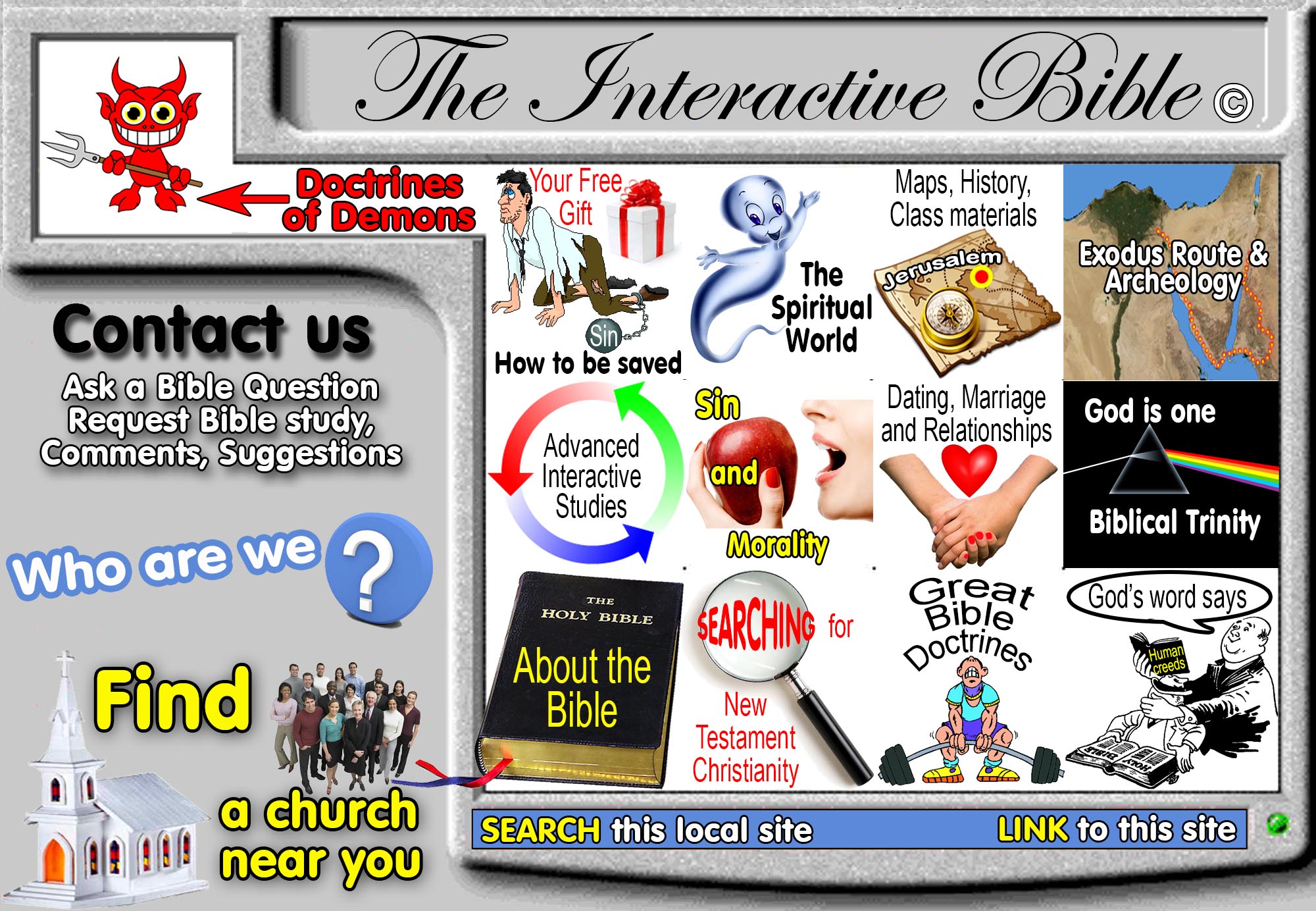|
The Earliest evidence for the New
Testament canon |
God's providence gave us the 27 book New Testament Canon, not the church. God, not men decided the canon. This providence does not mean that church leaders were inspired in their selecting the canon, only that God had his eye on the scriptures the whole time and brought about His will to form the Bible we see today!
|
|
The Earliest evidence for the New Testament canon |
The Earliest evidence for the New Testament canon
Introduction:
1. God oversaw the collection of the Canon of the New Testament by providence:
a. God's providence gave us the 27 book New Testament Canon, not the church. God, not men decided the canon.
b. This providence does not mean that church leaders were inspired in their selecting the canon, only that God had his eye on the scriptures the whole time and brought about His will to form the Bible we see today!
2. This of course does not mean that there was direct inspiration in the many men who were part of the process, just that God, in His providence, achieved His goal of a 27 book canon.
a. For example the late 4th century councils that drafted lists of 27 books, were merely rubber stamping what had long been the universal standard for the majority of Christians.
3. By 100AD, all 27 books of the New Testament were in circulation and all but Hebrews, 2 Peter, James, 2 Jn, 3 Jn, Revelation were universally accepted.
a. "All of these elements -the notation of the nomina sacra, the codex form, the uniform arrangement and number of writings in the manuscript tradition, the formulation of the titles, and the evidence indicating that the collection was called "New Testament" from the very beginning- are evidence of a careful final redaction. These editorial features did not originate with the authors of the individual writings. They serve to combine disparate material into a collection and to create the impression of a cohesive literary unit for readers of the work. Furthermore, these elements are so idiosyncratic that they cannot be credited to several independently operating editors but must be the work of a single editorial entity." (The first edition of the New Testament, David Trobisch, p 44, 2000)
b. "But this question, like most over which Christians disagree, is not the cutting edge of what Christianity is all about...there was division everywhere in the church on the books that might be called the 'fringe,' but there was very little disagreement over what was at the core of the matter...The division of opinion...was not over the core, but over the 'fringe.'" (The Formation of the Christian Biblical Canon, Lee M. MacDonald, 1995, p 132)
c. Basilides was a Gnostic heretic who lived about 117-138 AD. Basilides, however, quoted from 1 Corinthians prefacing the quote with: "the scripture says".
I. Evidence to support the early canon:
1. The use of "Nomina Sacra":
a. Although non-inspired books also contained these abbreviations for special words, it does prove the existence of a special collection of books.
2. The Codex Form rather than scrolls.
a. It is quite amazing, but the New Testament breaks with the Old Testament tradition of using scrolls and used book form (codex) right from the very beginning.
3. That books were distributed within four sets of collections:
a. Gospels, Paul's letters, Catholic epistles, Revelation. So consistent are the sets of collections, that there are standard symbols used in the study of Bible manuscripts to designate each collection.
4. Uniform Arrangement within each category:
a. Generally there was a similar order of books like Matthew, Mark Luke and John within the gospel collection. Although there were exceptions to the ordering of the books, they were often very similar.
5. Number Of Writings within each category:
a. 4 gospels, Paul's letters etc., Catholic epistles, Revelation.
6. Formulation Of the Titles:
a. The titles (ie. Gospel according to Matthew, etc.) were added at a later date by those who compiled the letters into one volume.
b. Although the titles are not inspired, the fact that all the manuscripts employ the same titles for each book, strongly argues for an early and unified canon of scripture.
c. "In view of the unanimity on this point of the tradition of the Church which can be traced back to the beginning of the second century, we are justified in assuming that the Epistle [Ephesians] had this title [in Ephesus 1:1] when it was incorporated into the collection of Pauline letters which afterwards came into general circulation in the Church." (Introduction To The New Testament, Theodor Zahn, 1909 p 481)
7. The Collection Was Called "New Testament"
a. The Earliest Christians described their writings as "the New Testament". Since the expression "the New Testament" is used many times within the Bible itself, this proves that the apostolic writings were clearly intended to be organized into a single collection.
8. Marcion's restricted canon: 125-144 AD
a. Marcion's concern was to exclude books that he disapproved of from his "canon." He was not assembling a collection of Christian books, but making a (very restricted) selection from the corpus of texts which already existed and which must already have been recognized as sacred by many in the church-otherwise he would not have needed to insist on abolishing them. (Lee Martin McDonald, James A. Sanders, Editors: The Canon Debate; John Barton, Marcion Revisited, p 342, 2002)
b. The New Testament books, or at any rate the central "core" of the Gospels and the Pauline and Catholic Epistles, were already used very widely in the time before Marcion, and continued to be so used after him. (Lee Martin McDonald, James A. Sanders, Editors: The Canon Debate; John Barton, Marcion Revisited, p 343, 2002)
II. What Scholars have said:
- Thus it is entirely possible to possess scriptures without having a canon, and this was in fact the situation in the first few centuries of the Christian church. (Lee Martin McDonald, James A. Sanders, Editors: The Canon Debate; Geoffrey Mark Hahneman, The Muratorian Fragment and the Origins of the New Testament Canon, 2002, p 380)
- The authority, of specific writings was questioned as early as the second half of the second century. Many older studies of the history of the canon, in my opinion, have drawn the wrong conclusion from this observation. The traditional interpretation asserts that these discussions reflect a debate about which writings should be included in the Christian Bible. But with the uniform manuscript evidence in mind, the critical remarks of the church fathers can be better interpreted as a historical critical reaction to an existing publication. Their debate as to the authorship and authority of the individual writings continues among biblical scholars to this very day, and then, as now, the publication to which they referred was the Canonical Edition of the Christian Bible. (The first edition of the New Testament, David Trobisch, 2000, p 35)
- There is no need to use such a document to reconstruct the New Testament when we have manuscripts from the same time period, the close of the second century, that nicely document each collection unit. There is no need to speculate about whether the Letter to the Hebrews was part of a collection of the Letters of Paul in the second century, because a second-century exemplar of the Pauline letter collection, P46, containing the letter at issue, actually exists. Are we not forced by the evidence to interpret the discussion in the early church about the authenticity of certain biblical writings as a reaction to an already published book? From this perspective, the same documented debates that are usually evaluated to demonstrate a gradual growth process of the canon serve instead as proof that the Canonical Edition of the Christian Bible was finished, published, and widely used. (The first edition of the New Testament, David Trobisch, 2000, p 37)
- "During most of the history of the early church the letters of Paul were transmitted, not in isolation from each other, but within a collection. The earliest textual witnesses of his letters already reflect the form of a corpus (cf. Zuntz). (The New Testament as canon, Brevard S. Childs, 1984, p 422)
- "The modern debate over the development of the Pauline corpus emerged in the long controversy between T. Zahn and A. Harnack. Zahn developed his position, which was supported with formidable scholarship, by an exhaustive study of the early canonical lists, Marcion, and the Apostolic Fathers, especially Clement, Polycarp, and Ignatius. He argued that the references to the Pauline letters in widely separated areas of the church (Rome, Corinth, Smyrna, Antioch) as well as the high level of uniformity among the epistles mentioned, could only be explained by assuming a process of conscious collection, the motivation for which Zahn attributed to the liturgical function of public worship. He assigned the process of the formation of the corpus of thirteen Pauline epistles, which he thought comprised the collection, to the period between AD 80 and 85, after the writing of the book of Acts. He located this canonical activity geographically in Corinth. Harnack agreed with Zahn regarding the early age of the Pauline collection and set AD 100 as the terminus ad quem for the corpus, which had by then grown from ten to thirteen letters by the addition of the Pastorals. He also envisioned a growth which was motivated by the public reading of the Pauline letters in worship. However, Harnack differed at a decisive point from Zahn by sharply distinguishing between the public reading from a Pauline collection and the formal recognition of the corpus' canonicity." (The New Testament as canon, Brevard S. Childs, 1984, p 422)
III. Roman Catholic and Orthodox confuse the issue:
1. False claims by Catholic and Orthodox church leaders like James Bernstein:
"The second big surprise came when I realized that the first complete listing of New Testament books as we have them today did not appear until over 300 years after the death and resurrection of Christ. (The first complete listing was given by St. Athanasius in his Paschal Letter in A.D. 367.)" (Which Came First: The Church or the New Testament?, Fr. James Bernstein, Orthodox churchman, 1994, p 6)
2. Refutation of James Bernstein (Orthodox):
- Bernstein, being an Orthodox apologist, has a direct vested interest in promoting the superiority of "man made church tradition" over what the Bible says. If he can make you think the Bible did not exist until 367 AD, then he can deceive you into thinking that perhaps the Orthodox position on "church tradition" is correct.
- The way Orthodox and Catholic leaders portray is, they give you the wrong impression. Just because we have the first complete list in the 4th century, doesn't change the fact that all the 27 books of the New Testament were in full circulation since 100 AD, the majority by 70 AD.
- A more accurate and responsible way of depicting the historical data is that the entire New Testament was in full use and only about 5 books, were questioned. Even so, these 5 books were still being used in churches throughout the world from 100 AD.
By Steve Rudd: Contact the author for comments, input or corrections.

